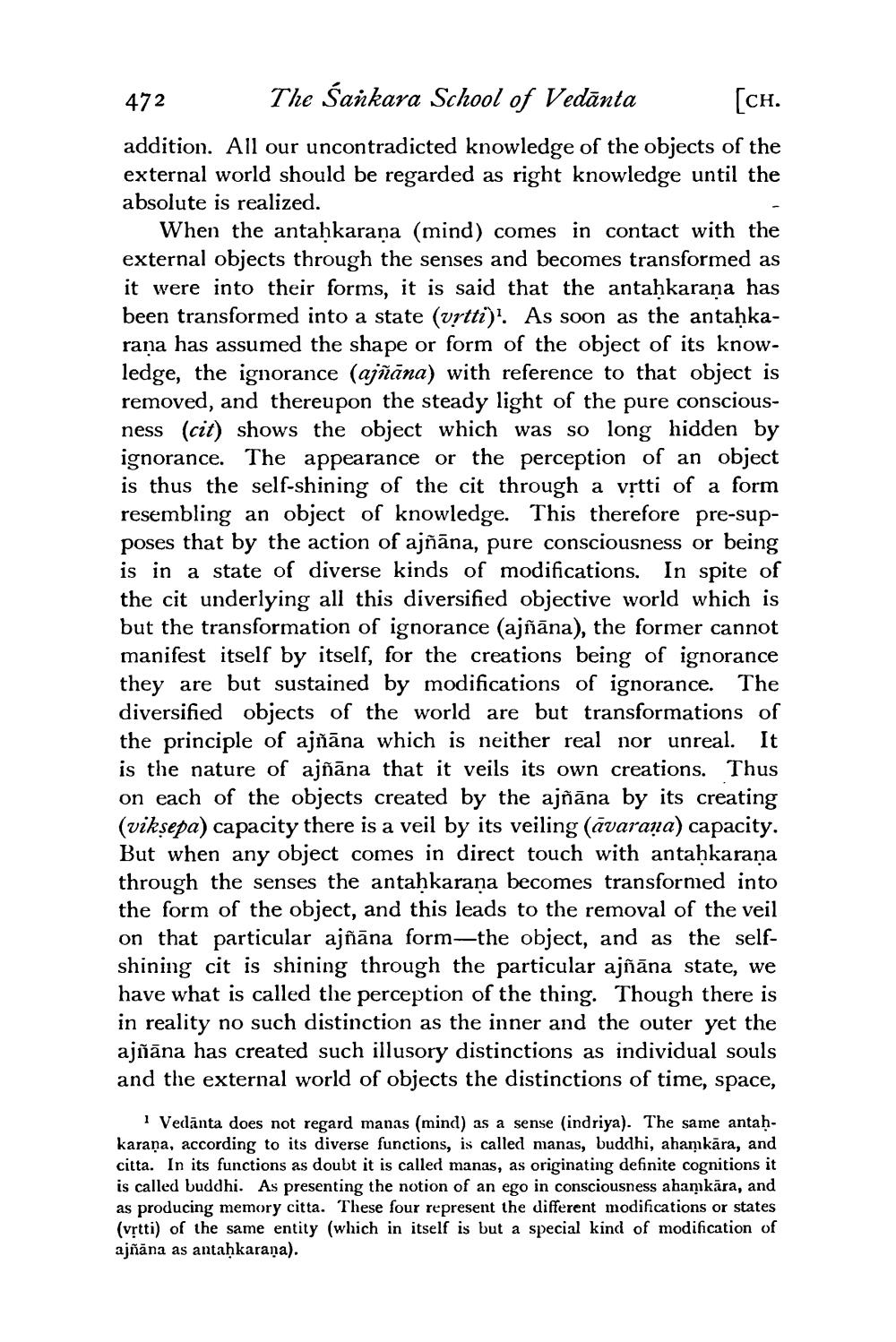________________
472
The Sankara School of Vedānta
[CH.
addition. All our uncontradicted knowledge of the objects of the external world should be regarded as right knowledge until the absolute is realized.
When the antahkarana (mind) comes in contact with the external objects through the senses and becomes transformed as it were into their forms, it is said that the antahkarana has been transformed into a state (vrtti)? As soon as the antaḥkarana has assumed the shape or form of the object of its knowledge, the ignorance (ajñāna) with reference to that object is removed, and thereupon the steady light of the pure consciousness (cit) shows the object which was so long hidden by ignorance. The appearance or the perception of an object is thus the self-shining of the cit through a vrtti of a form resembling an object of knowledge. This therefore pre-supposes that by the action of ajñāna, pure consciousness or being is in a state of diverse kinds of modifications. In spite of the cit underlying all this diversified objective world which is but the transformation of ignorance (ajñāna), the former cannot manifest itself by itself, for the creations being of ignorance they are but sustained by modifications of ignorance. The diversified objects of the world are but transformations of the principle of ajñāna which is neither real nor unreal. It is the nature of ajñāna that it veils its own creations. Thus on each of the objects created by the ajñāna by its creating (viksepa) capacity there is a veil by its veiling (āvarana) capacity. But when any object comes in direct touch with antahkarana through the senses the antahkarana becomes transformed into the form of the object, and this leads to the removal of the veil on that particular ajñāna form—the object, and as the selfshining cit is shining through the particular ajñāna state, we have what is called the perception of the thing. Though there is in reality no such distinction as the inner and the outer yet the ajñāna has created such illusory distinctions as individual souls and the external world of objects the distinctions of time, space,
I Vedānta does not regard manas (mind) as a sense (indriya). The same antahkaraña, according to its diverse functions, is called manas, buddhi, ahamkāra, and citta. In its functions as doubt it is called manas, as originating definite cognitions it is called buddhi. As presenting the notion of an ego in consciousness ahamkāra, and as producing memory citta. These four represent the different modifications or states (vrtti) of the same entity (which in itself is but a special kind of modification of ajñāna as antahkarana).




